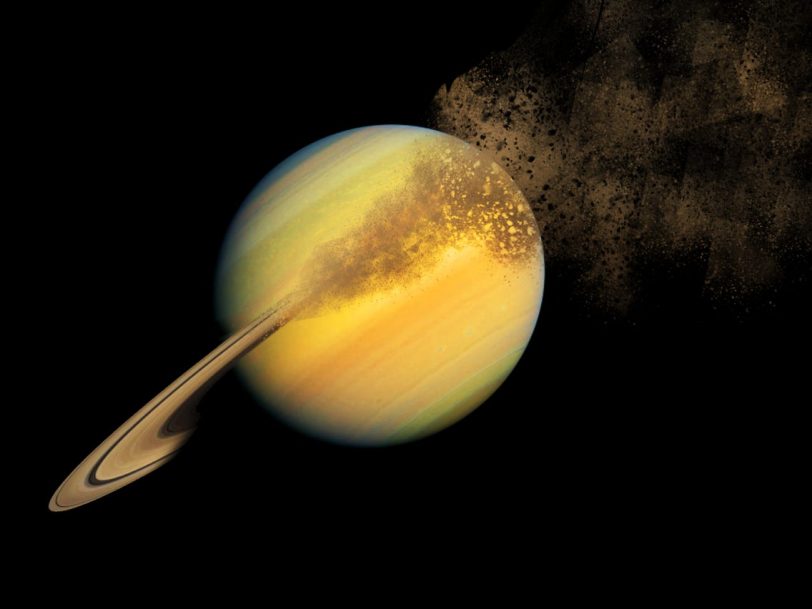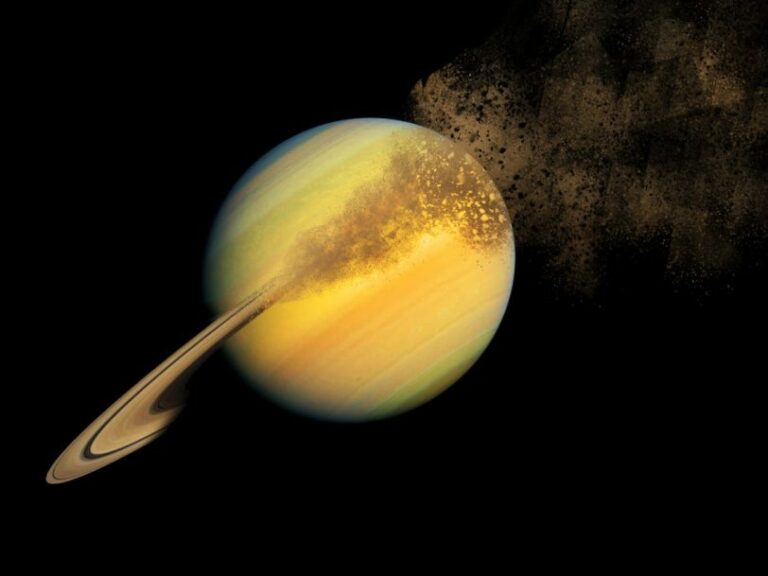It’s official: Saturn Is Losing Its Iconic Rings And They’re Disappearing Much Faster Than Expected
If you had to pick Saturn out of a crowd, you’d most likely recognize it by its iconic rings. They are our solar system’s largest and brightest rings. Extending over 280,000 kilometers from the planet and wide enough to fit six Earths in a row. Saturn, on the other hand, will not always appear in this light. Because its rings are disappearing.
That’s right, Saturn is losing its rings! And fast. Much faster, even, than scientists had first thought. Saturn is currently receiving 10,000 kilograms of ring rain per second. Fast enough to fill an Olympic-sized pool in under 30 minutes.

This rain is made up of the shattered remains of Saturn’s rings. Saturn’s rings are mostly made up of ice and rock chunks. Which are constantly bombarded: some by UV radiation from the Sun, while others by tiny meteoroids.
When these collisions take place, the icy particles vaporize, forming charged water molecules that interact with Saturn’s magnetic field; ultimately, falling toward Saturn, where they burn up in the atmosphere.
Ring rain has been known since the 1980s, when NASA’s Voyager mission discovered mysterious, dark bands that turned out to be ring rain caught in Saturn’s magnetic fields. Researchers estimated that the rings would completely drain in 300 million years. But observations by NASA’s former Cassini spacecraft give a darker prognosis. Before its death dive into Saturn in 2017, Cassini managed to get a better look at the amount of ring-dust raining on Saturn’s equator.
The scientist discovered that it was raining more heavily than anticipated. They calculated that the rings had only 100 million years left to live based on these improved observations. It’s difficult to imagine Saturn without rings right now.
However, for the majority of its existence, the planet was as naked as Earth. While Saturn formed approximately 4.5 BILLION years ago, studies indicate that the rings are only 100-200 million years old at most. That makes them younger than some dinosaurs.
So when you think about it, we’re pretty lucky we happened to be around to see those magnificent rings. Really lucky, in fact. Because efforts to study those rings have led us to other discoveries.
Source:ILoveTheUniverse
Do not forget to share your opinion with us to provide you with the best posts !




0 Comments